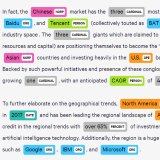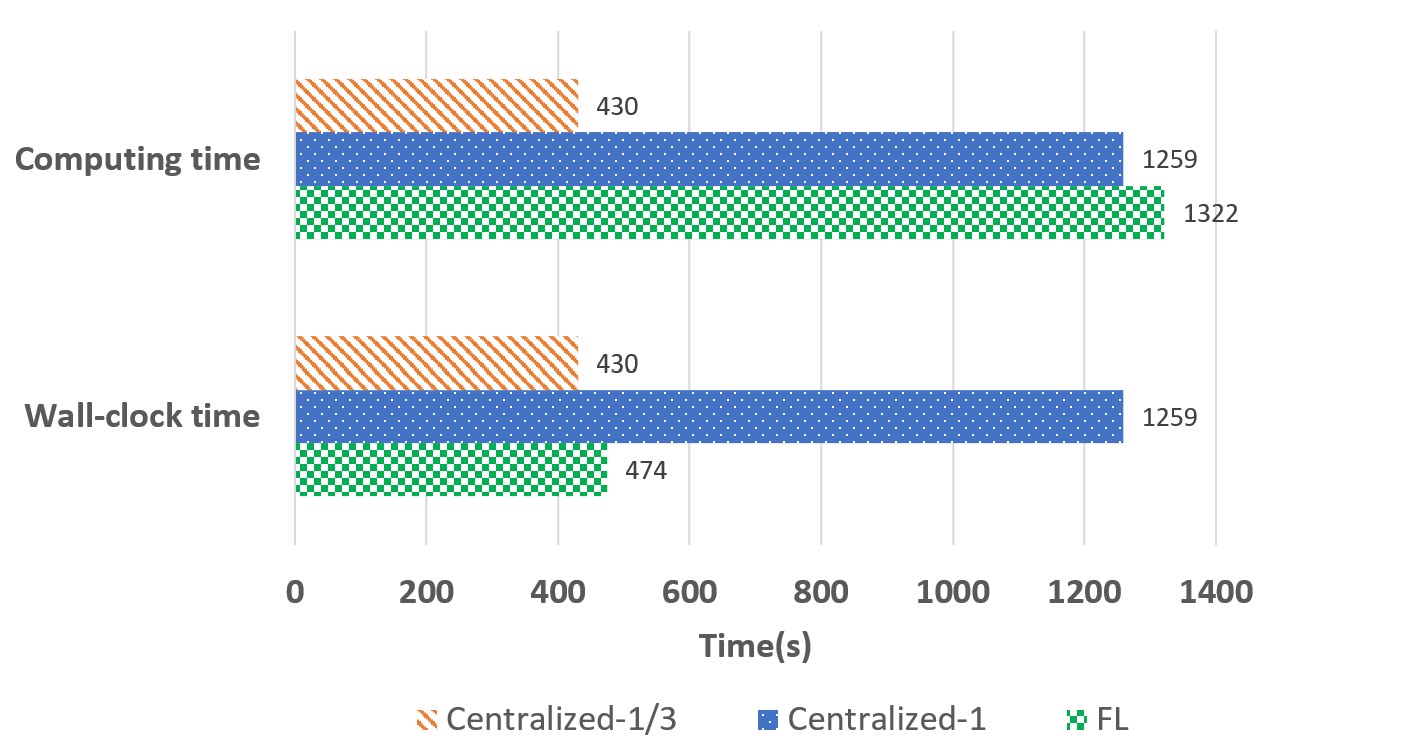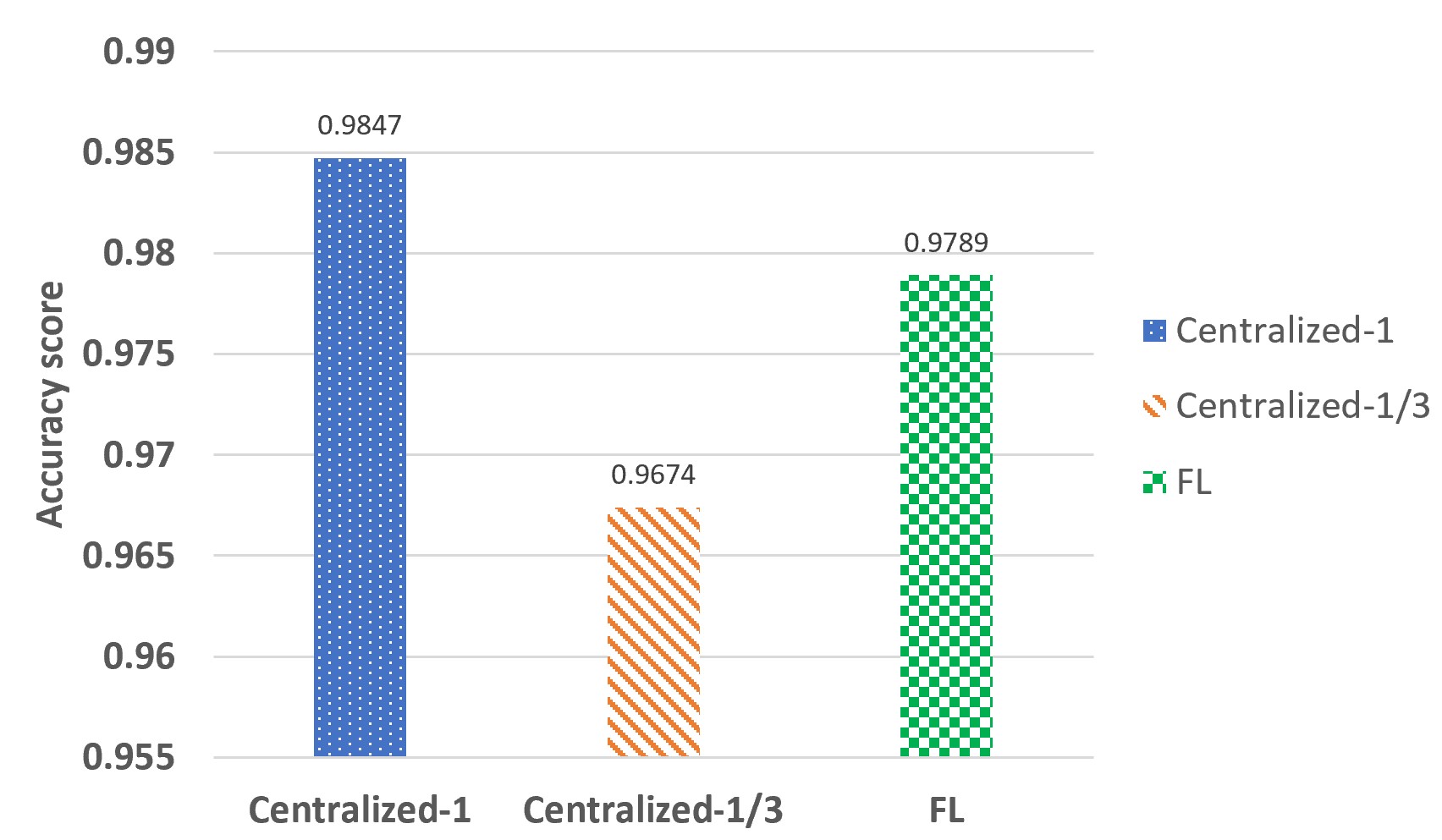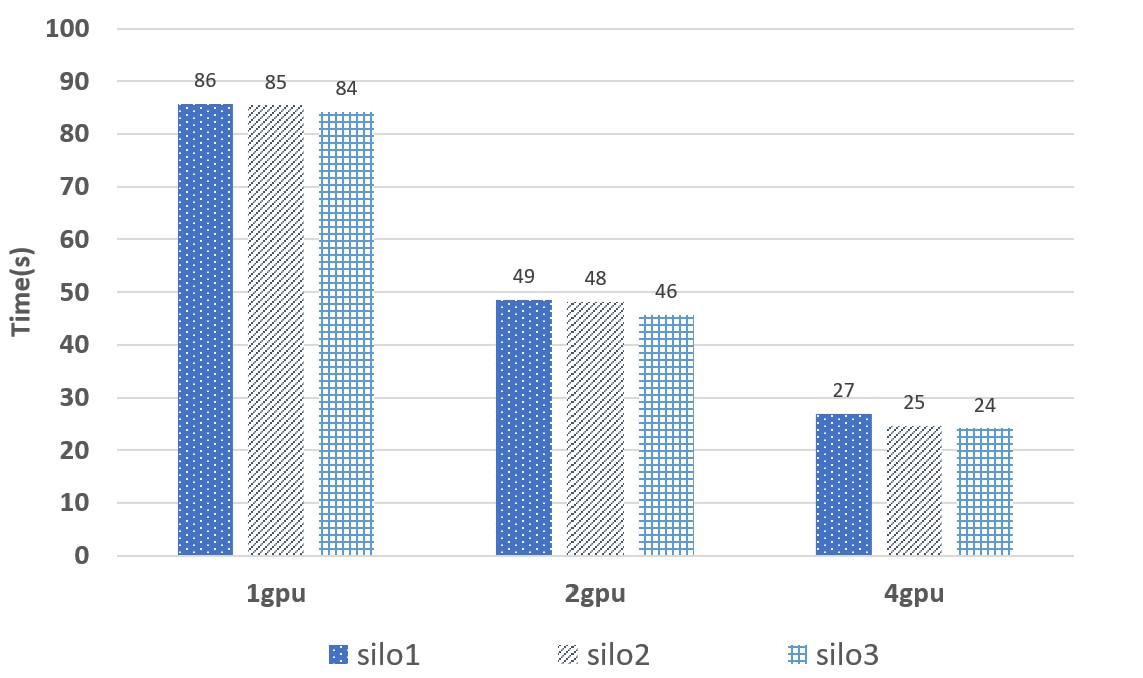Federated Learning (FL) is a framework where one trains a single ML model on distinct datasets that cannot be gathered in a single central location. This enables companies and institutions to comply with regulations related to data location and data access while allowing for innovation and personalization.
This repo provides some code samples for running a federated learning pipeline in the Azure Machine Learning platform.
- ⚡ Getting Started
- Real world examples
- FL Frameworks
- Documentation
- Real-world example benchmarks
- Need Support?
- Contributing
No time to read? Go directly to the quickstart to provision a demo within minutes in your own subscription.
To understand the journey to achieve production-ready Federated Learning, please check our guide to Plan Your FL Project.
To know more about the resource provisioning alternatives, please go to the provisioning cookbook.
If you are looking for a ready-to-use sandbox environment, please check out our sandboxes.
Here are some links showing applications of FL on Azure ML in production:
Please also check our industry use cases below, which cover both horizontal (same features but different samples across silos) and vertical (different features but same samples across silos) scenarios. You can find more information about differences between the scenarios in the following tutorial.
| Medical Imaging - Horizontal | Named Entity Recognition - Horizontal | Fraud Detection - Horizontal |
 |
 |
 |
| pneumonia.md | ner.md | ccfraud.md |
| Fraud Detection - Vertical | Fraud Detection - Vertical with Single Shot Communication | Bank Marketing - Vertical |
 |
 |
 |
| ccfraud-vertical.md | ccfraud-vetical-fedonce.md | bank-marketing-vertical.md |
If you are already using a specific FL framework, you can port your code to work with AzureML. The following table shows the tested frameworks and the corresponding code samples.
| Framework | Status |
|---|---|
| NVFlare | Experimental, works only with in-cloud FL. |
| Flower | Experimental, works only with in-cloud FL. |
Please find a full documentation of this project here.
A benchmarking analysis is performed for each real-world example to understand the validy, efficiency and scalability of our implementation of FL:
| Training overhead | Model performance | Scalability |
|---|---|---|
 |
 |
 |
Please check the troubleshooting guide for possible solutions. If you are unable to find a solution, please open an issue in this repository.
If you have any feature requests, technical questions, or find any bugs, please do not hesitate to reach out to us.
For bug reports and feature requests, you are welcome to open an issue.
This project welcomes contributions and suggestions. Most contributions require you to agree to a Contributor License Agreement (CLA) declaring that you have the right to, and actually do, grant us the rights to use your contribution. For details, visit https://cla.opensource.microsoft.com.
To contribute, please start by creating a self-assigned issue giving a high-level overview of what you'd like to do. Once any discussion there concludes, follow up with a PR.
Please send an email to aims-team@microsoft.com to request a "contributor" access to this repository, if you have difficulty in creating a branch. When you submit a pull request, a CLA bot will automatically determine whether you need to provide a CLA and decorate the PR appropriately (e.g., status check, comment). Simply follow the instructions provided by the bot. You will only need to do this once across all repos using our CLA.
This project has adopted the Microsoft Open Source Code of Conduct. For more information see the Code of Conduct FAQ or contact opencode@microsoft.com with any additional questions or comments.